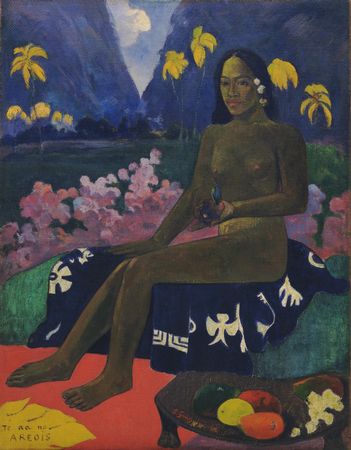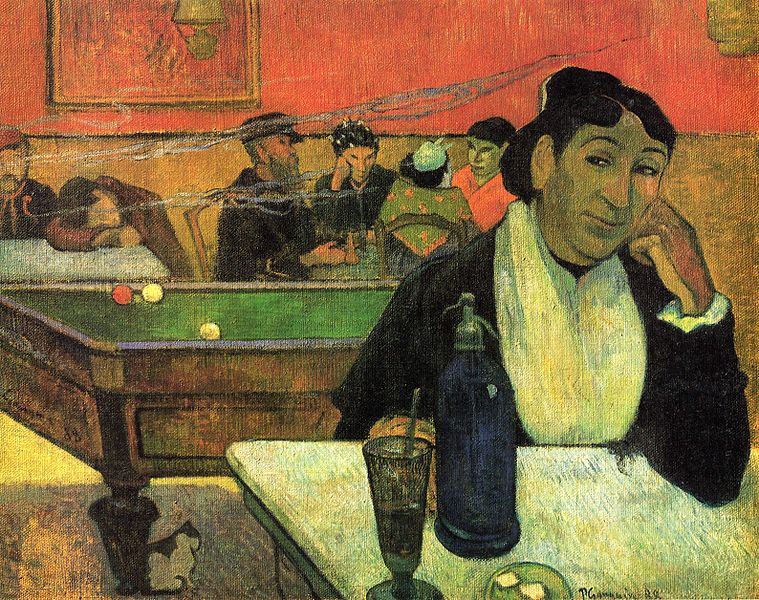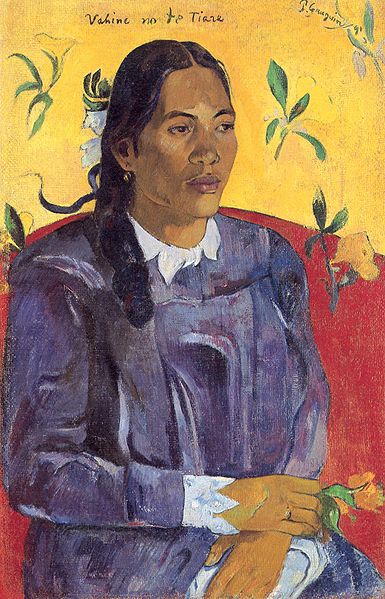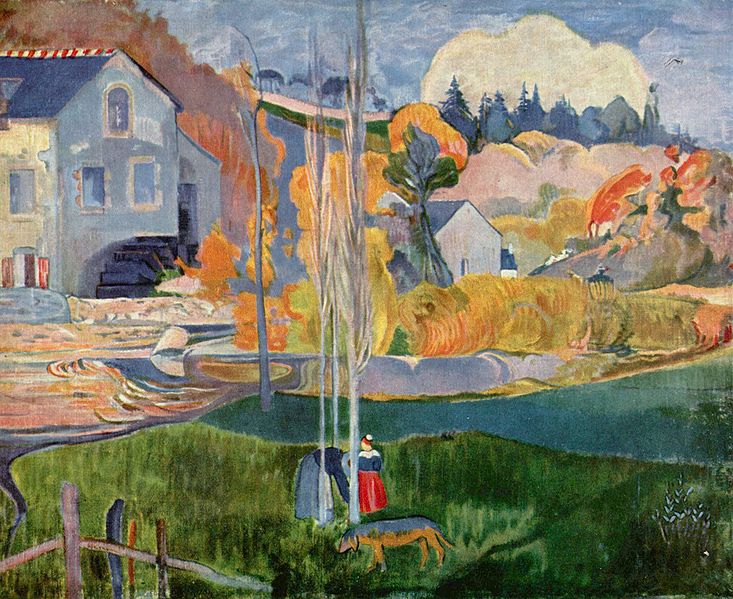<Back to Index>
- Physicist Philipp Eduard Anton von Lenard, 1862
- Painter Eugène Henri Paul Gauguin, 1848
- Chairman of the Council of Ministers of the People's Republic of Hungary Imre Nagy, 1896
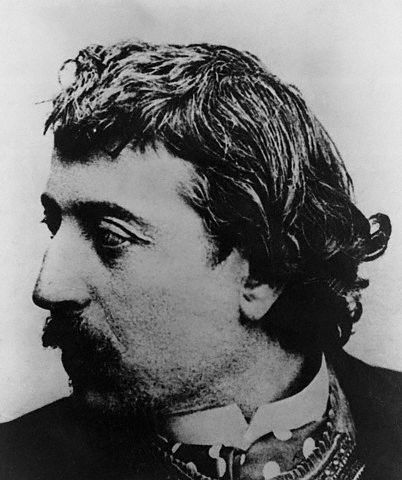
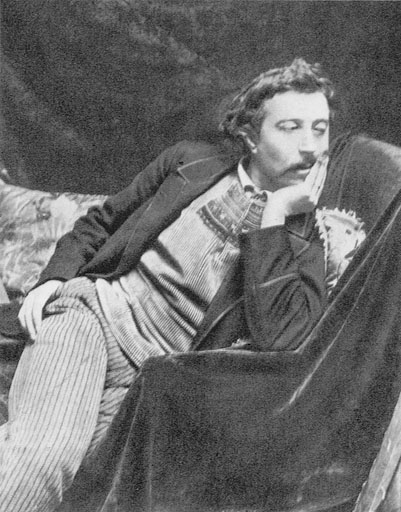
Eugène Henri Paul Gauguin (7 June 1848 – 8 May 1903) was a leading Post-Impressionist painter. His bold experimentation with colouring led directly to the Synthetist style of modern art while his expression of the inherent meaning of the subjects in his paintings, under the influence of the cloisonnist style, paved the way to Primitivism and the return to the pastoral. He was also an influential exponent of wood engraving and woodcuts as art forms.
Paul Gauguin was born in Paris, France, to journalist Clovis Gauguin and half-Peruvian Aline Maria Chazal, the daughter of proto-socialist leader Flora Tristan. In 1851 the family left Paris for Peru, motivated by the political climate of the period. Clovis died on the voyage, leaving three-year old Paul, his mother and his sister to fend for themselves. They lived for four years in Lima, Peru, with Paul's uncle and his family. The imagery of Peru would later influence Paul in his art. At the age of seven, Paul and his family returned to France. They moved to Orléans, France, to live with his grandfather. He soon learned French and excelled in his studies. At seventeen, Gauguin signed on as a pilot's assistant in the merchant marine to fulfill his required military service. Three years later, he joined the navy where he stayed for two years. In 1871, Gauguin returned to Paris where he secured a job as a stockbroker. In 1873, he married a Danish woman, Mette-Sophie Gad. Over the next ten years, they had five children.
Gauguin
had been interested in art since his childhood. In his free time, he
began painting. He also visited galleries frequently and purchased work
by emerging artists. Gauguin formed a friendship with artist Camille Pissarro, who introduced him to various other artists. As he progressed in his art, Gauguin rented a studio, and showed paintings in Impressionist exhibitions held in 1881 and 1882. Over two summer holidays, he painted with Camille Pissarro and occasionally Paul Cézanne. By 1884 Gauguin had moved with his family to Copenhagen, where he pursued a business career as a stockbroker. Driven to paint full-time, he returned to Paris in 1885, leaving his family in Denmark.
Without adequate subsistence, his wife (Mette Sophie Gadd) and their
five children returned to her family. Gauguin outlived two of his
children. In 1887, after visiting Panama, he spent several months near Saint Pierre in Martinique, in the company of his friend the artist Charles Laval. At first, the 'negro hut' in which they lived suited him and he enjoyed watching people in their daily activities. However, the weather in the summer was hot and the hut leaked in the rain. He also suffered dysentery and marsh fever.
While in Martinique, he produced between ten and twenty works (twelve
being the most common estimate). While in Martinique, Gauguin traveled
widely there and apparently came into contact with the small community
of Indian immigrants, a contact that would later influence his art through the incorporation of Indian symbols. Gauguin, along with Emile Bernard, Charles Laval, Emile Schuffenecker and many others frequently visited the artist colony of Pont-Aven in Brittany. By the bold use of pure color and Symbolist choice of subject matter the group is now considered a Pont-Aven School.
Like his friend Vincent van Gogh, with whom in 1888 he spent nine weeks painting in Arles, Paul Gauguin experienced bouts of depression and at one time attempted suicide. Disappointed with Impressionism, he felt that traditional European painting had become too imitative and lacked symbolic depth. By contrast, the art of Africa and Asia seemed
to him full of mystic symbolism and vigour. There was a vogue in Europe
at the time for the art of other cultures, especially that of Japan (Japonism). He was invited to participate in the 1889 exhibition organized by Les XX. Under the influence of folk art and Japanese prints, Gauguin evolved towards Cloisonnism, a style given its name by the critic Édouard Dujardin in response to Emile Bernard's method of painting with flat areas of color and bold outlines, which reminded Dujardin of the Medieval cloisonné enamelling
technique. Gauguin was very appreciative of Bernard's art and of his
daring with the employment of a style which suited Gauguin in his quest
to express the essence of the objects in his art. In The Yellow Christ (1889),
often cited as a quintessential Cloisonnist work, the image was reduced
to areas of pure colour separated by heavy black outlines. In such
works Gauguin paid little attention to classical perspective and boldly
eliminated subtle gradations of colour, thereby dispensing with the two
most characteristic principles of post-Renaissance painting. His painting later evolved towards Synthetism in which neither form nor colour predominate but each has an equal role. In
1891, Gauguin, frustrated by lack of recognition at home and
financially destitute, sailed to the tropics to escape European
civilization and "everything that is artificial and conventional."
(Before this he had made several attempts to find a tropical paradise
where he could 'live on fish and fruit' and paint in his increasingly
primitive style, including short stays in Martinique and as a labourer on the Panama Canal construction, however he was dismissed from his job after only two weeks). Living in Mataiea Village in Tahiti, he painted "Fatata te Miti" ("By the Sea"), "Ia Orana Maria" (Ave Maria) and other depictions of Tahitian life. He moved to Punaauia in 1897, where he created the masterpiece painting "Where Do We Come From" and then lived the rest of his life in the Marquesas Islands, returning to France only once, when he painted at Pont-Aven. His
works of that period are full of quasi-religious symbolism and an
exoticized view of the inhabitants of Polynesia. In Polynesia, he sided
with the native peoples, clashing often with the colonial authorities
and with the Catholic Church. During this period he also wrote the book Avant et après (before
and after), a fragmented collection of observations about life in
Polynesia, memories from his life and comments on literature and
paintings. In
1903, due to a problem with the church and the government, he was
sentenced to three months in prison, and charged a fine. At that time
he was being supported by the art dealer Ambroise Vollard. He died of syphilis before he could start the prison sentence. His body had been weakened by alcohol and a dissipated life. He was 54 years old. Gauguin died on May 8, 1903, and is buried in Calvary Cemetery (Cimetière Calvaire), Atuona, Hiva ‘Oa, Marquesas Islands, French Polynesia. Primitivism was
an art movement of late 19th century painting and sculpture;
characterized by exaggerated body proportions, animal totems, geometric
designs and stark contrasts. The first artist to systematically use
these effects and achieve broad public success was Paul Gauguin. The
European cultural elite discovering the art of Africa, Micronesia, and Native Americans for
the first time were fascinated, intrigued and educated by the newness,
wildness and the stark power embodied in the art of those faraway
places. Like Pablo Picasso in the early days of the 20th century, Gauguin was inspired and motivated by the raw power and simplicity of the so-called Primitive art of those foreign cultures. Gauguin is also considered a Post-Impressionist painter. His bold, colorful and design oriented paintings significantly influenced Modern art. Gauguin's influence on artists and movements in the early 20th century include Vincent van Gogh, Henri Matisse, Pablo Picasso, Georges Braque, André Derain, Fauvism, Cubism and Orphism, among others. Later he influenced Arthur Frank Mathews and the American Arts and Crafts Movement. Gauguin's relationship with Van Gogh was rocky. Gauguin had shown an early interest in Impressionism, and the two shared bouts of depression and suicidal tendencies. In 1888, Gauguin and Van Gogh spent nine weeks together, painting in the latter's Yellow House in Arles. During this time, Gauguin became increasingly disillusioned with Impressionism, and the two quarrelled.


